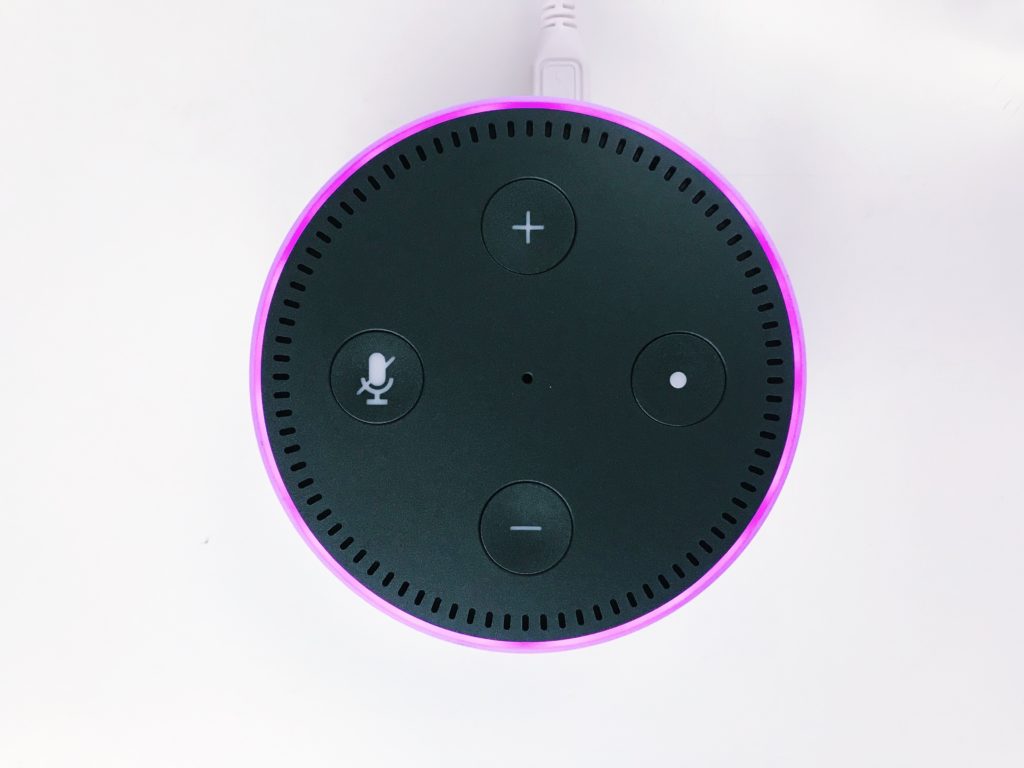5 tips to get voice search strategy right for your brand

Whether you’re a ‘Hey Googler’, an absolute believer in ‘Siri’, or in love with Amazon’s ‘Alexa’ – or even if you never used these technologies before – voice search is likely to play an ever-growing role in your life. This once-futuristic technology is now helping us check our work schedules and run through family engagements and house chores. It even provides traffic information or simply presents us the latest news on simple verbal commands. Its efficiency and precision improves year after year, and using it for search is perhaps the quickest way to get information either at home, at the office or on the go.
But are businesses prepared for this? Maybe your company’s SEO practices are neat and well-oiled, but how does voice search impact your search strategy? Any business that aims to thrive in the digital world must have voice search among their top priorities. Let’s see how voice search is trending in the U.S. and how it can affect your paid media and search engine strategies.
The voice revolution is here
 The widespread use of smartphones and the rise of digital voice assistants gave voice search a boost in recent years. Roughly 8 out of 10 Americans own smartphones with built-in voice assistants such as Apple Siri, Amazon Alexa, Microsoft Cortana, Google Assistant and Samsung Bixby. These AI voice assistants are helping hundreds of millions of people search for anything, anywhere, anytime.
The widespread use of smartphones and the rise of digital voice assistants gave voice search a boost in recent years. Roughly 8 out of 10 Americans own smartphones with built-in voice assistants such as Apple Siri, Amazon Alexa, Microsoft Cortana, Google Assistant and Samsung Bixby. These AI voice assistants are helping hundreds of millions of people search for anything, anywhere, anytime.
The result is that more than 20% of all Google mobile searches are now conducted by voice.
Among consumers who use voice assistance, 89% use it to search and 88% ask it questions. 71% of voice assistant users also say they’d rather search by voice than by typing. And according to a survey by Stone Temple, almost 25% of respondents listed voice search as their first choice when searching in the internet in 2019, compared to around 15% in 2018.
Voice technology is causing a revolution in the way people relate to their digital devices — and it’s just the beginning. Experts predict that 3 in every 10 searches will be conducted without a screen by 2020, as voice assistants are expected to be incorporated into more devices – either mobile or smart speakers – every year.
As for businesses, voice search is already a strong way to help consumers get the products or services they want. Today, it generates $2 billion in purchases a year, a number that is expected to jump to $40 billion in the near future. It means that voice technologies will represent an enormous value for customers and for brands as they become more sophisticated and widespread.
5 tips to get ready for voice search
So how should your brand or business be prepared for all this? Virtually all digital-oriented companies have search engine optimization (SEO) well built into their strategies, but until now it’s been aimed at search done the “old way”: by typing. What differences should be paid attention to in terms of voice search? And how does it affect your campaigns and paid media?
1 – Have conversations with your audience
If paid search is in your strategy, it’s best to start planning less in terms of text queries and more in terms of conversation. As we’ve mentioned before, almost 9 out of every 10 voice assistant users do their search by posing questions. And as voice technologies get more efficient and precise, “natural” conversations tend to be the way people relate to their devices.
So when you select your keywords, think conversational. Give preference to a wider range of words, because voice searches tend to be longer than typed queries. And you should also consider simpler words, since orality is usually made of less formal, more loosen terms.
One more thing: depending on your business, you should think if customers would rather pose explicit or implicit phrases on their voice searches, as well as specific or open-ended commands. For example, they might prefer to say: “Give me a recipe for lamb chops”, or “What should I have for Sunday lunch?” There’s no formula: no brand is 100% the same as the other.
2 – Know the moment your customer is in
Having conversations with voice assistants also means that people will use more of the question words in their searches: “what”, “who”, “when”, “where”, “why” and “how”. For example, instead of typing “steak house Baltimore” into Google, they will ask their devices: “Where is the nearest steak house in Baltimore”, or “What is the best steakhouse in Baltimore?”
And these terms will probably be used in different moments in their customer journey. As you may know, this is a 4-stage journey:
- Awareness: Becoming aware of the need for a product or service;
- Consideration: Looking at options that can fulfill this need;
- Evaluation: Evaluating each option to select the best one;
- Purchase: Buying the product or service.
Each of these stages are often associated with different question words. For example, people who ask “who” or “what” are probably at the beginning of their customer journey, or the awareness stage. On the other hand, those who ask “when” and “where” are closer to purchase.
So, in pay per click campaigns, it’s best to focus on phrases with “when” and “where”, because these leads will probably convert more. If you bid on sentences with “what” and “who”, keep your bid low, so you still get a good return on investment (ROI) with the “when” and “where” keywords.
3 – If you’re local, think local

Voice search surely impacts all kinds of companies and brands. But if you’re working with local businesses, either as an owner or running a marketing strategy, voice search should definitely be on your top priorities. 46% of voice search users say they regularly use voice to find local businesses, and 58% of all consumers have used voice search to find information on local businesses at least once.
The point is that local businesses usually don’t have a budget to run robust ad campaigns. So what could they do to perform well on voice search? Having fully updated profiles on platforms such as Google My Business is one way to go. Another is to dedicate some time and resources on encouraging and managing online ratings and reviews, in order to increase the chances of being delivered by voice assistants.
4 – Optimize differently for each voice assistant
When we think of text search and SEO practices, Google is basically all there is to think of, since more than 90% of all internet searches are done through it. But in terms of voice, things work much differently. Each voice assistant is structured in a different way than the other: Google Assistant, for example, draws its ratings and reviews from the company’s own data, but Apple Siri’s information comes from Yelp, and so on.
It means that a well-done voice search strategy must take this plurality in consideration. Having these many voice assistant options demands tailored optimization for each one of them from your business or brand.
5 – Be sure your site performs well
As it happens with regular SEO practices, having a well-built, quick-loading website is a huge step to perform well on voice search. The reason is that voice assistants usually deliver a few number of results, based on the sites they regard as reliable. So be sure to keep your site well structured, dedicating enough resources on speed and on mobile-oriented adjustments.
As we’ve said before, the voice search revolution is just beginning. It certainly will keep evolving with time, and so will the business and marketing practices that come with it. Being in touch with the latest trends is a sure way for you to help more people find your brand through voice.

